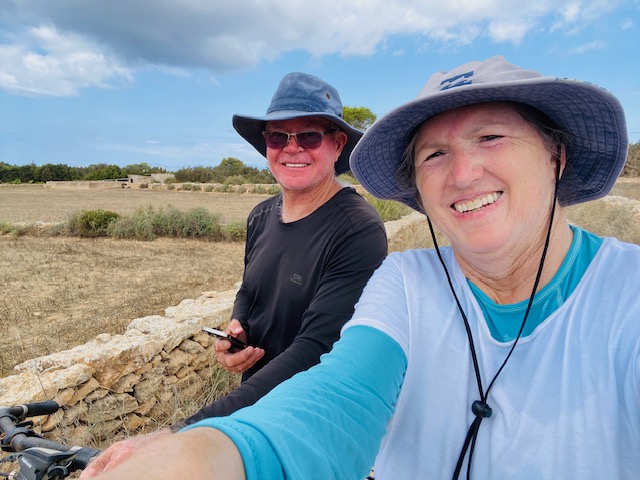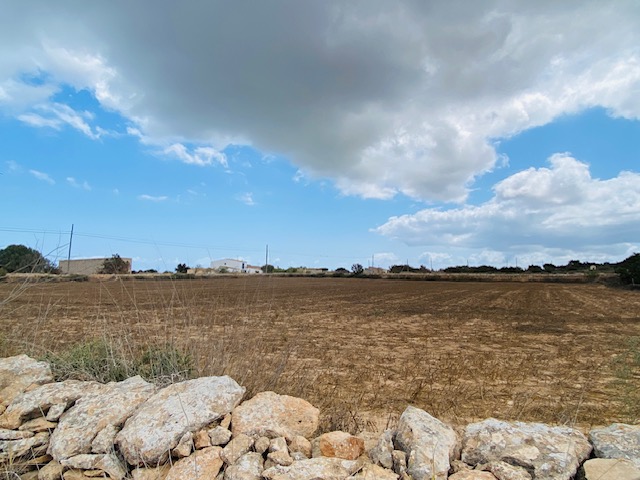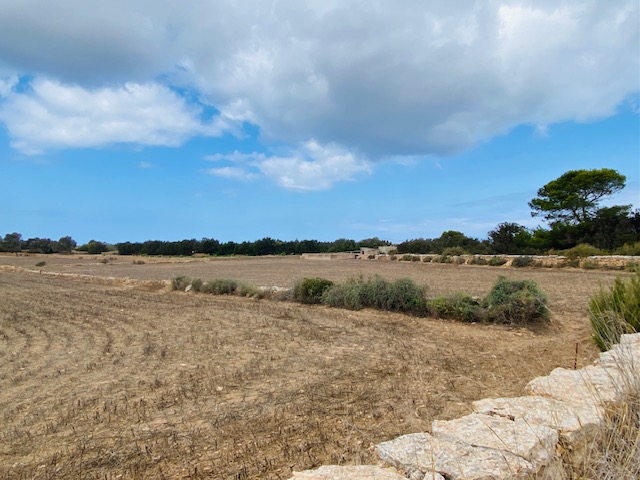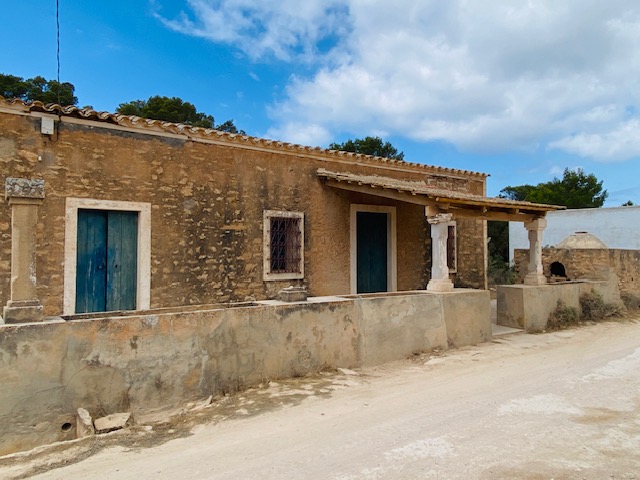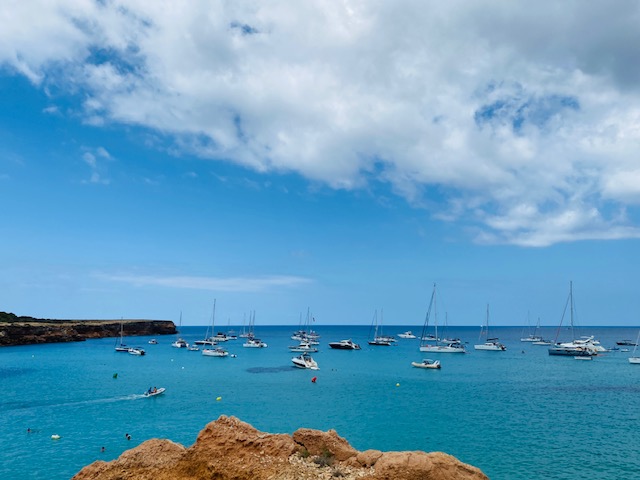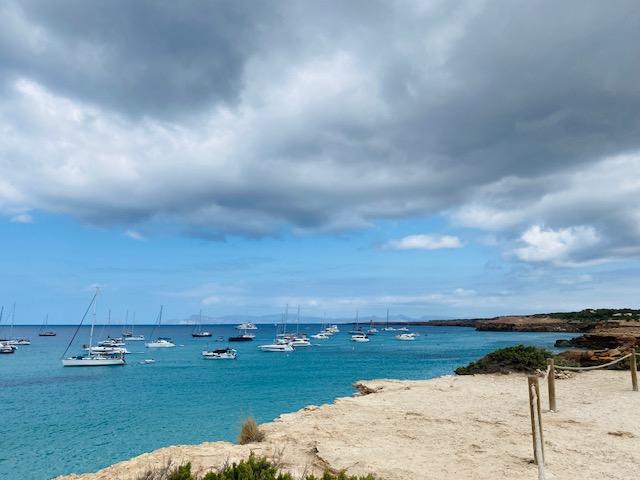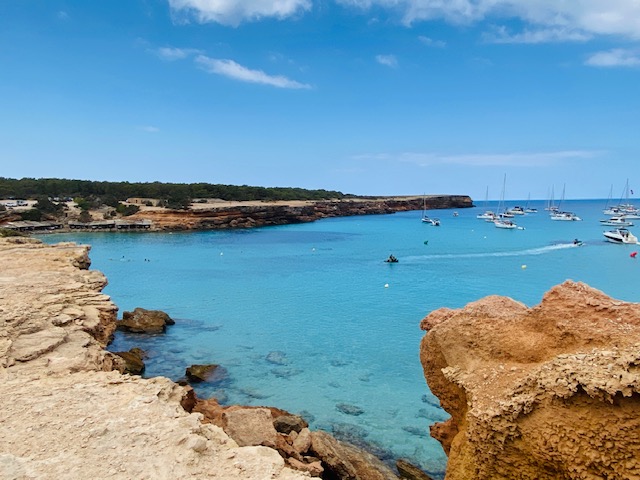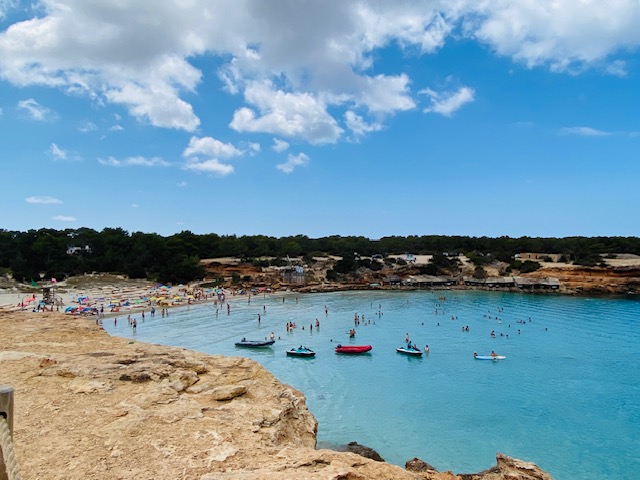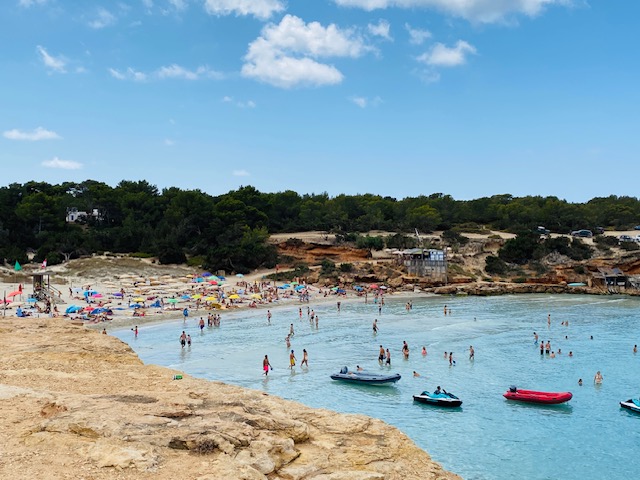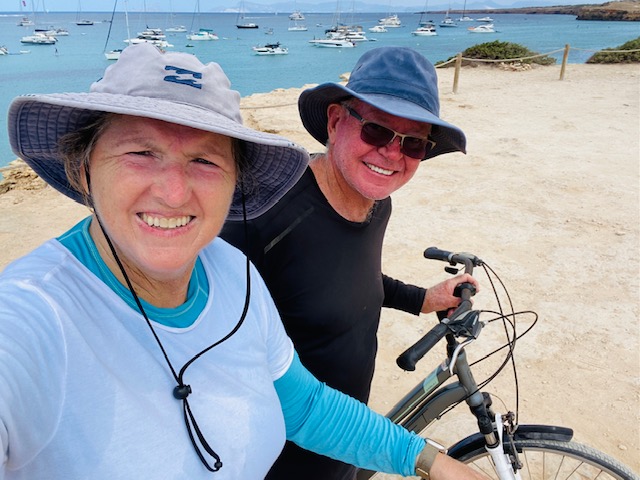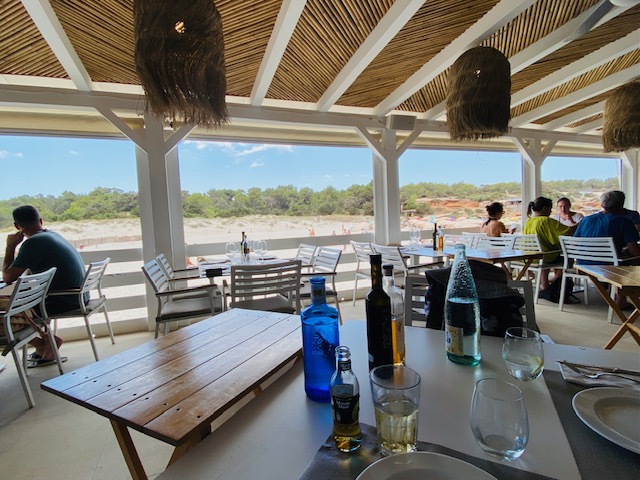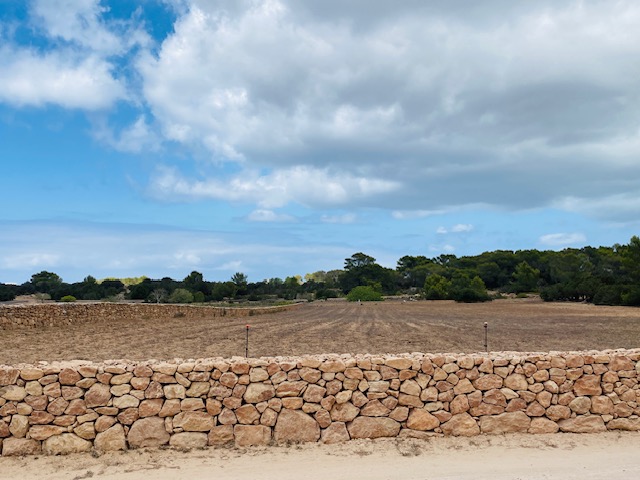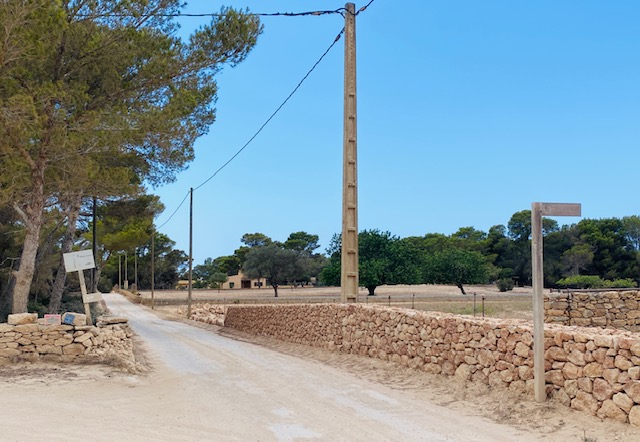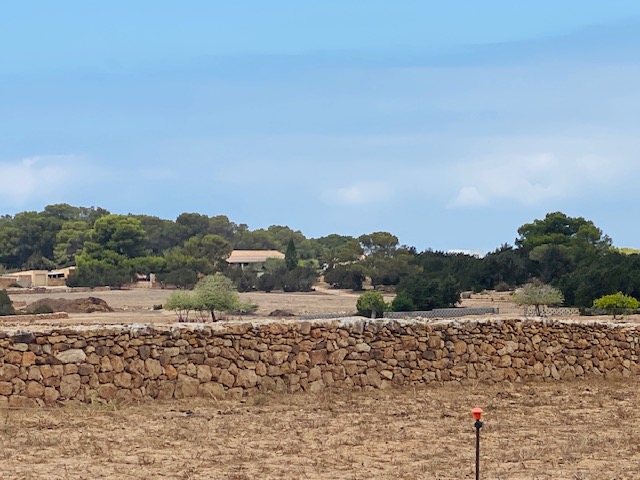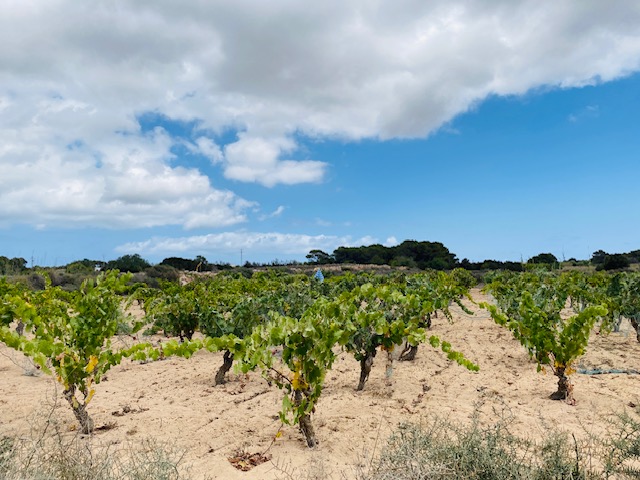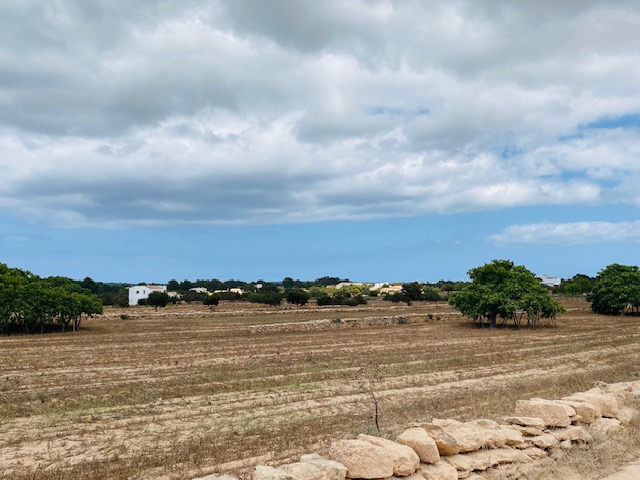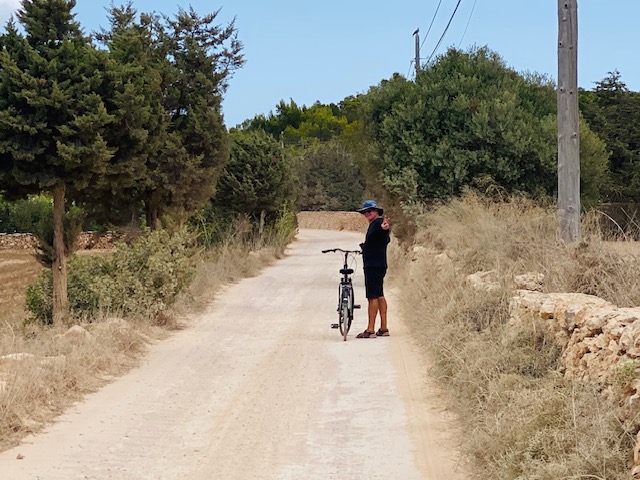So, after breakfast we dinghied ashore, deciding to use the “dinghy dock” in the town harbour rather than beaching it in the lagoon, then collected our bicycles. It’s fair to say, Roy was very dubious and sceptical about Elaine’s ability to actually stay on the bicycle and avoid some or other disastrous consequence, but she was confident she could manage the excursion without incident.
Besides taking the wrong route initially, which first took us in a direction we didn’t want to go, we then ended up on the main road between La Savina and Sant Francesc Xavier and, although we were in the bicycle lane, it was definitely not very pleasant and downright dangerous with cars, trucks, buses, motorbikes, etc flying past us.
After stopping for water and regrouping, we realised we’d missed the turnoff a few miles back, essentially adding 5 Km to what was supposed to be a 10 Km bicycle ride. Regardless, we found the correct route and enjoyed a lovely cycle through the countryside on dirt roads, passing numerous homes, farm fields and one or two vineyards, but it was very dry. We actually wondered how anything could grow, although there were plenty of trees. It was also interesting to see the many stone walls built by the Moors in 902 AD, who brought their advanced knowledge of agriculture and irrigation to the island and apparently the ancient irrigation systems introduce at that time are still in use today.
Research revealed that approximately 12,000 people live permanently on the small island, which is only 20 Km long and 2 Km wide.
Megalithic graves provide evidence of colonisation on the island that can be traced back over 4,000 years, but it has also been occupied by the Greeks, followed by the Romans, circa 200 BC. After the collapse of the Roman Empire in the 5th Century, Byzantines occupied the island before the Moors.
During the island’s more recent history, it suffered greatly during the Spanish Civil War and from 1939-1942 there was a concentration camp on the island, for political dissidents from mainland Spain, awaiting execution.
It was around 1300 by the time we made it to Cala Saona and just in time to beat the “Christmas rush” to enjoy a delicious, albeit a very expensive, lunch at Sol restaurant, a rather upmarket, fancy establishment we weren’t expecting, especially since we both looked like something the cat had dragged in.
It was after 1600 by the time we returned to La Savina, but had enjoyed our outing immensely. Stopping at one of the local supermarkets, we picked up a freshly baked baguette and bacon for our light BLT dinner onboard.
Given how hot it was and the state we were in by the time we got back to Paw Paw, we jumped in the water off her stern to cool down, before a shower, dinner and bed followed. Unfortunately the many parties around us were in full swing, with a late arrival continuing their festivities all night, making sleep almost impossible for us.
We had stayed up, though, to see the sunset, but that was hidden by clouds on the western horizon. A beautiful waxing gibbous, however, rose in the east just before we retired for the day.
